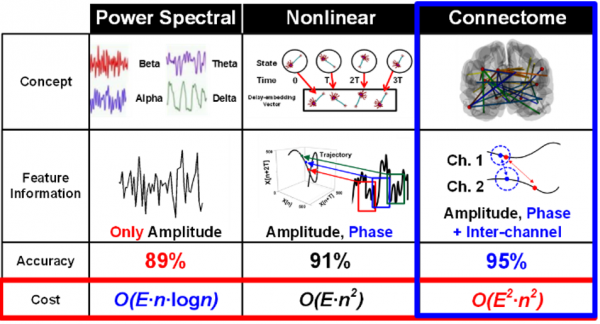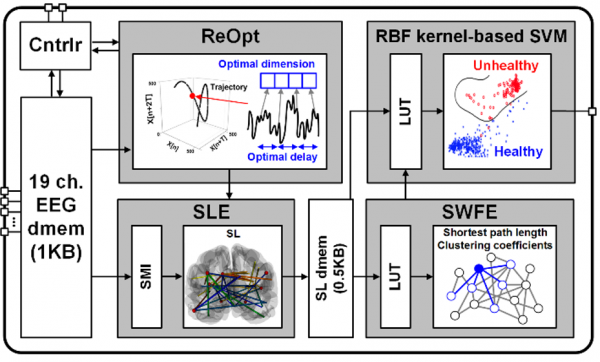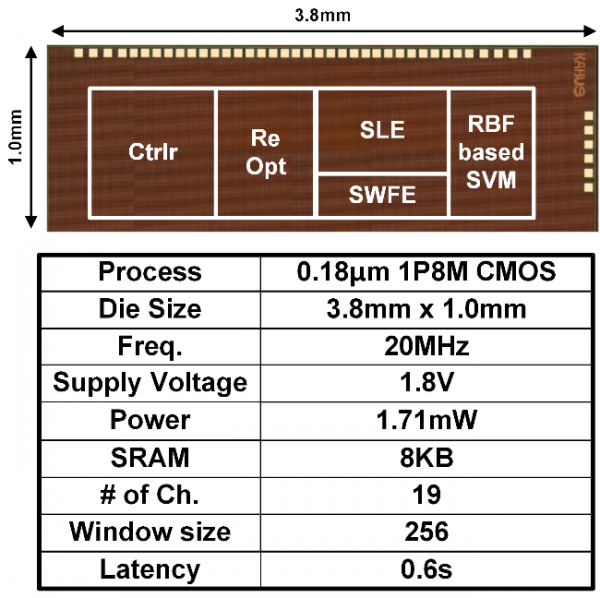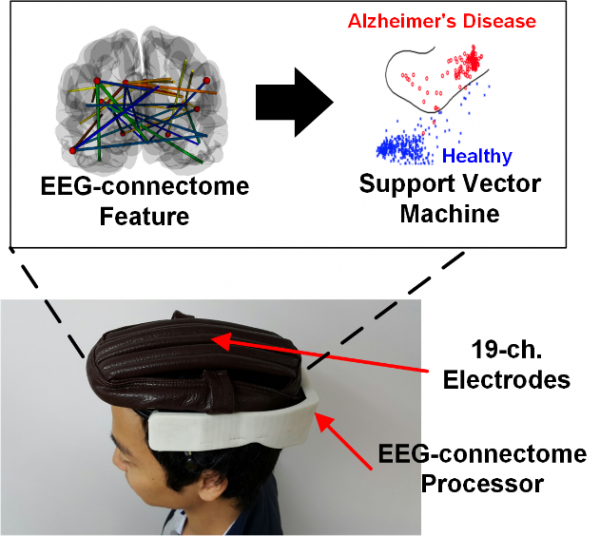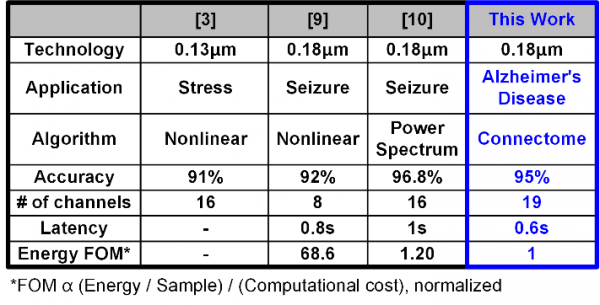EEG-Connectome
본문
Overview
Todays, mental diseases such as Alzheimer’s disease (AD), depression, schizophrenia, and epilepsy, etc. have become serious social issues. For example, about 10-20% of seniors are suffered from those mental diseases, and the number of AD patients are rapidly growing. Techniques using electroencephalogram (EEG) have emerged to diagnose mental health and treat mental disease.
In this context, several EEG processors have been proposed for continuous mental health monitoring systems. However, most of them used only power spectral analysis or nonlinear analysis. Both of those methods discard the inter-channel information, resulting in low diagnosis accuracy about 90%. To increase the diagnosis accuracy over 95%, connectome algorithms which use all of the amplitude, phase, and inter-channel information were proposed. Connectome represents the neural connections in the human brain, and it is effective to diagnose mental health, such as AD, depression, autism, and attention-deficit hyperactivity disorder (ADHD). Consequently, the EEG processor for mental health monitoring system should include the connectome calculation.
